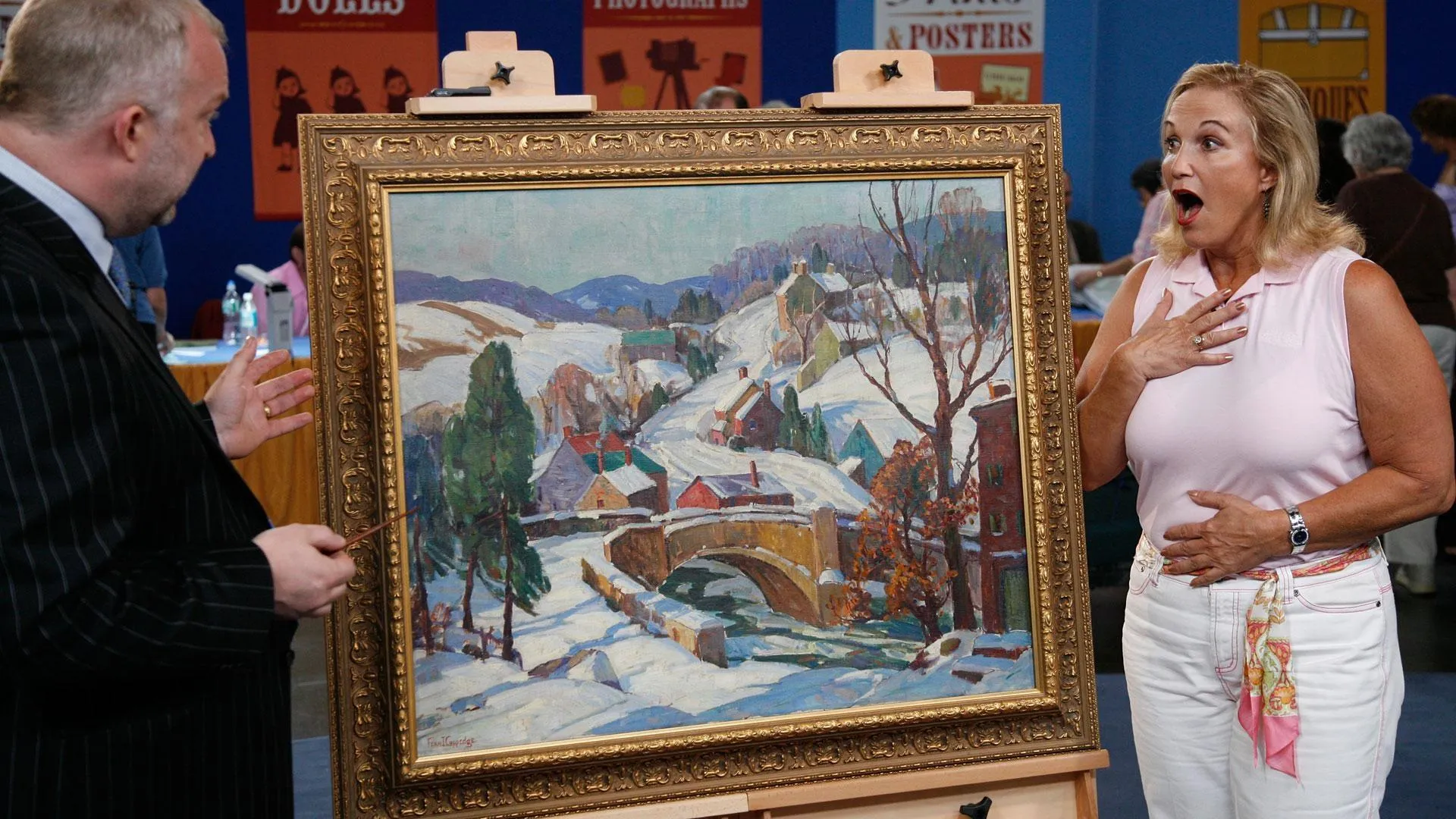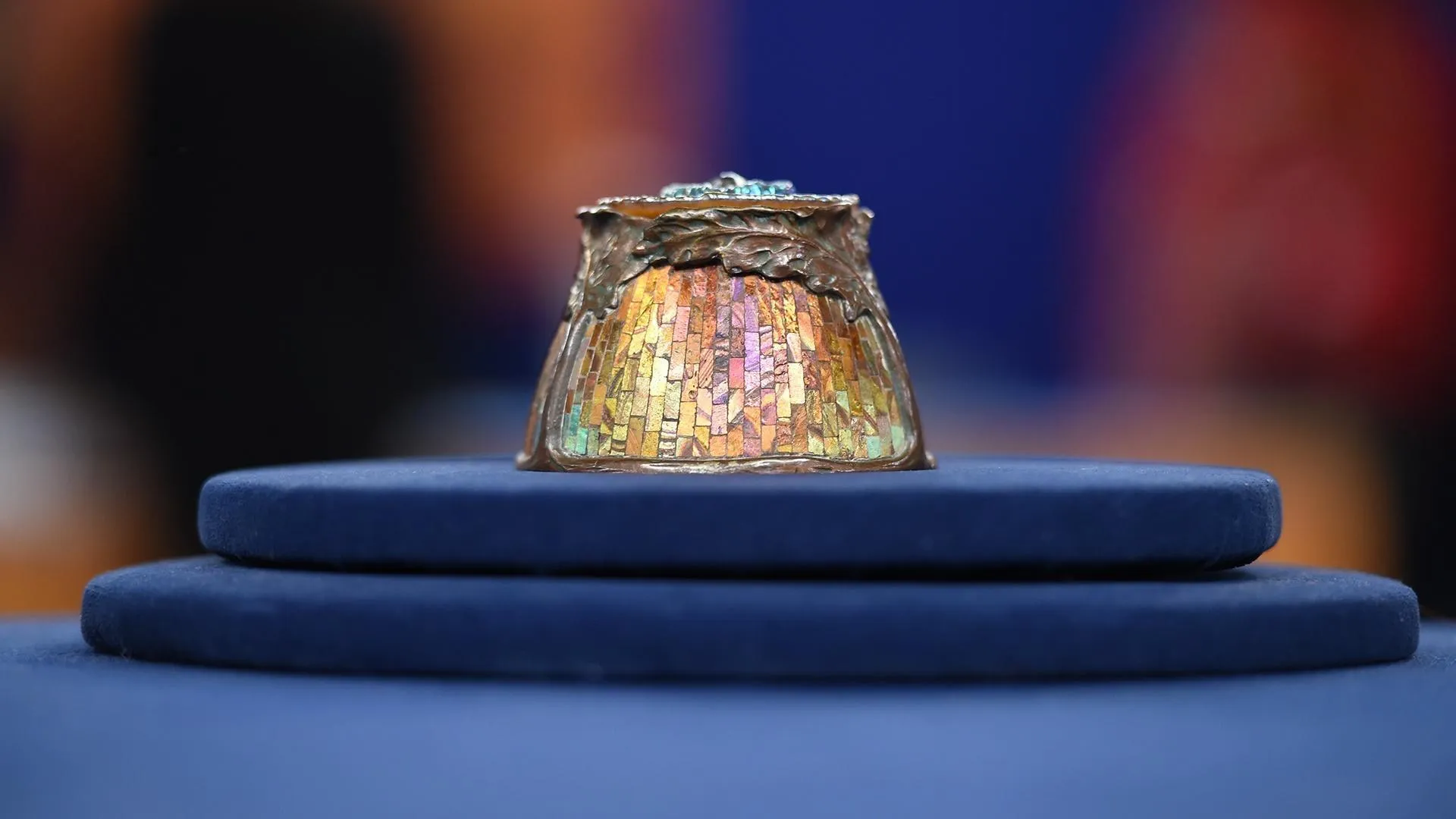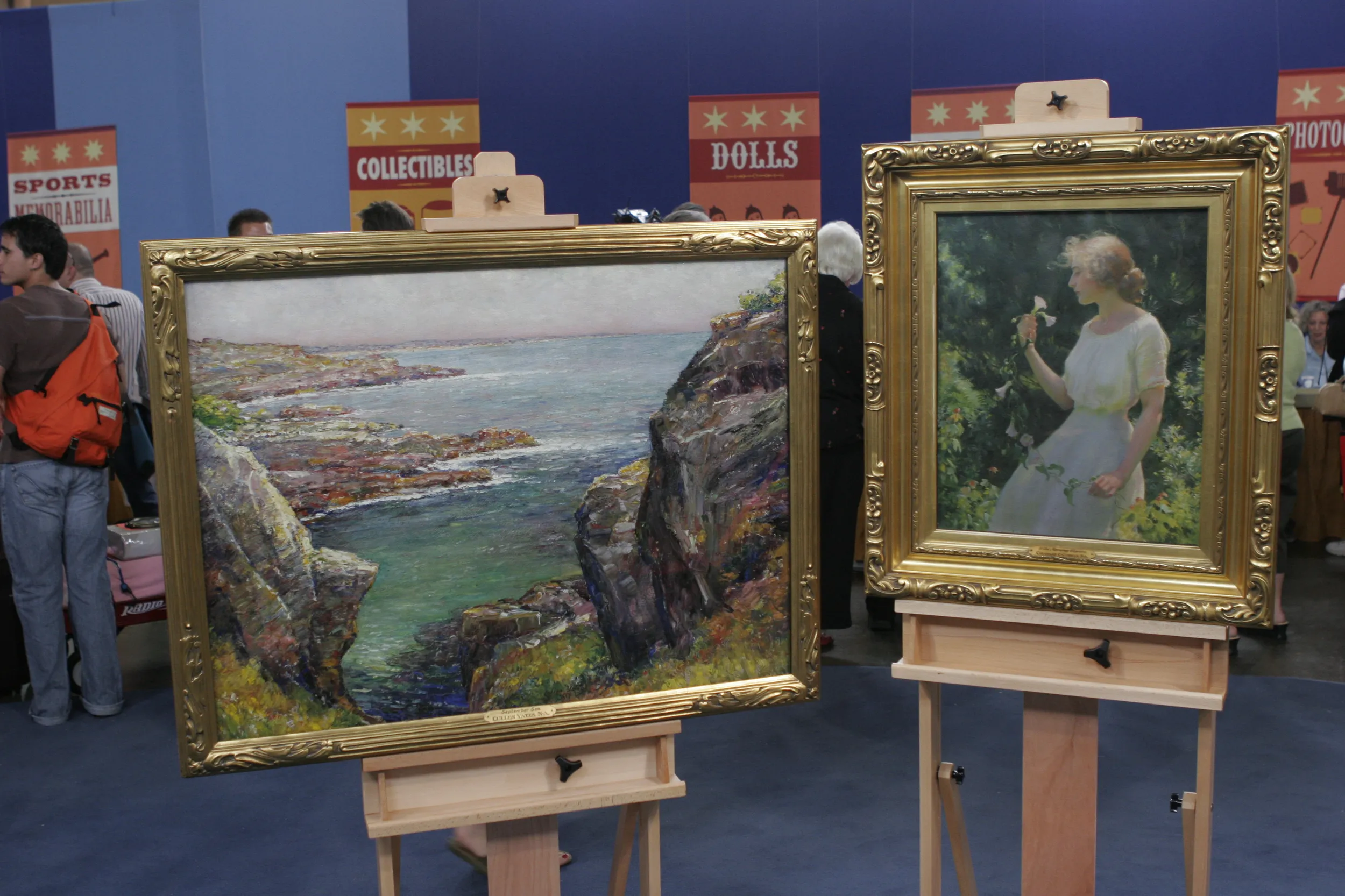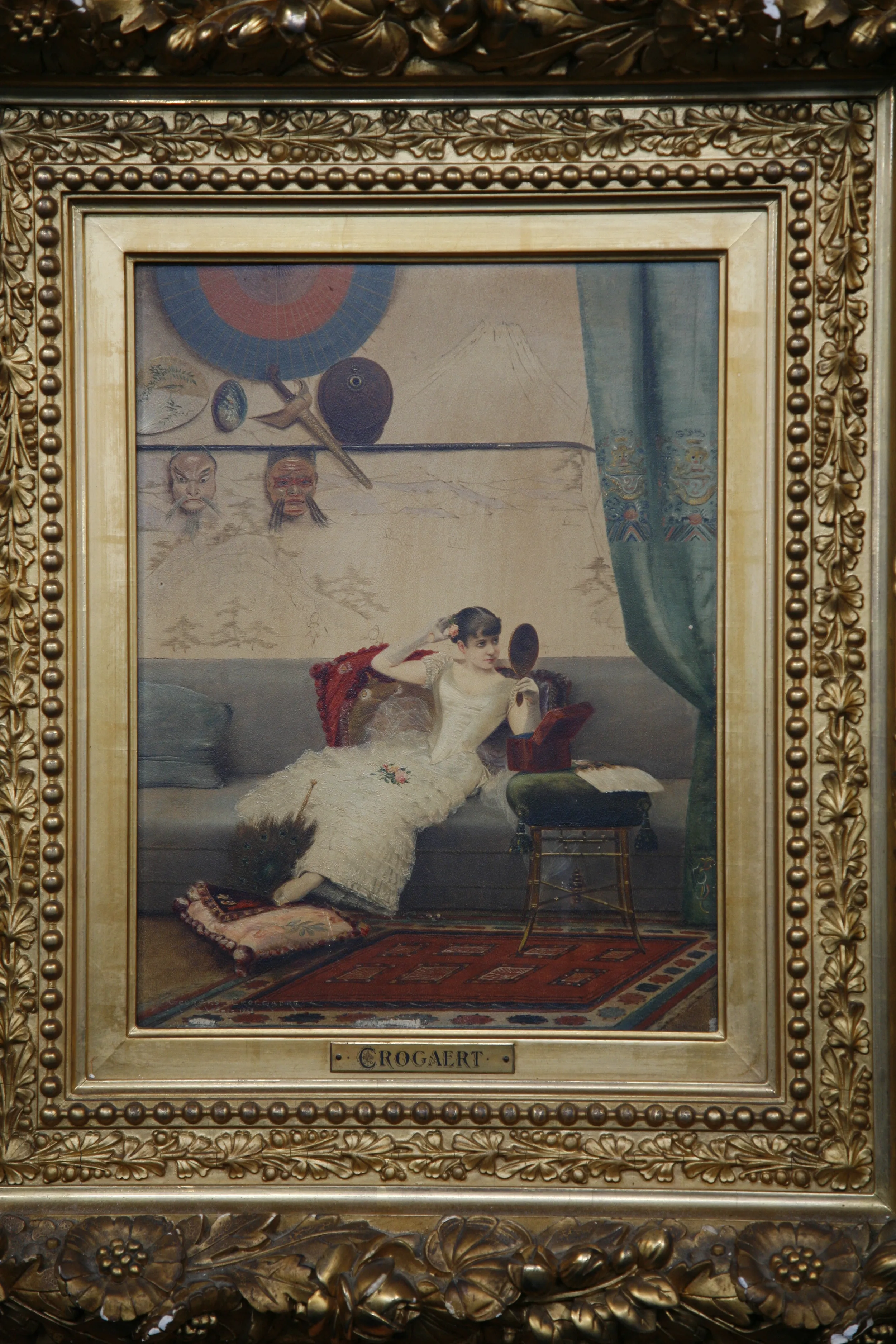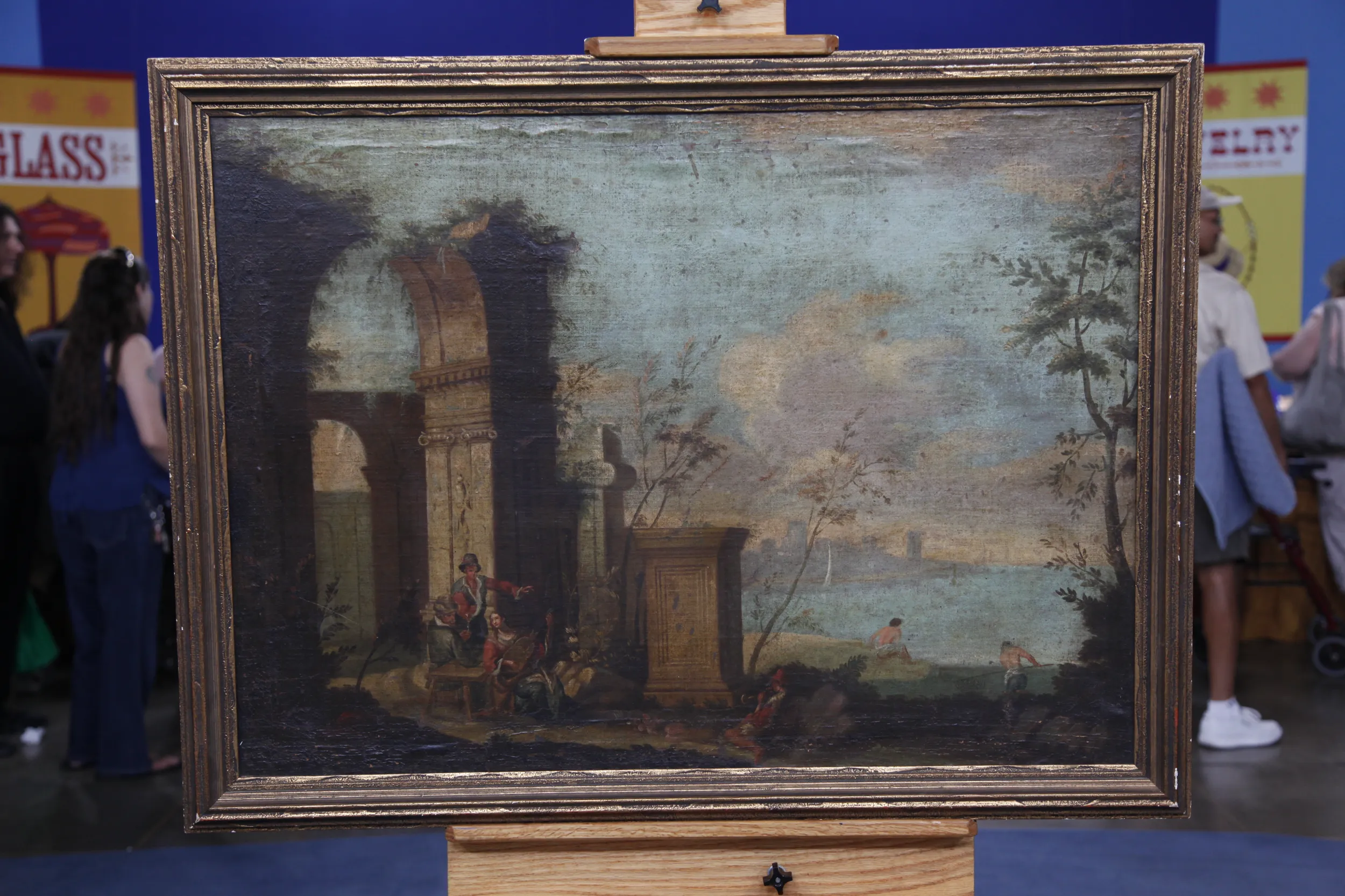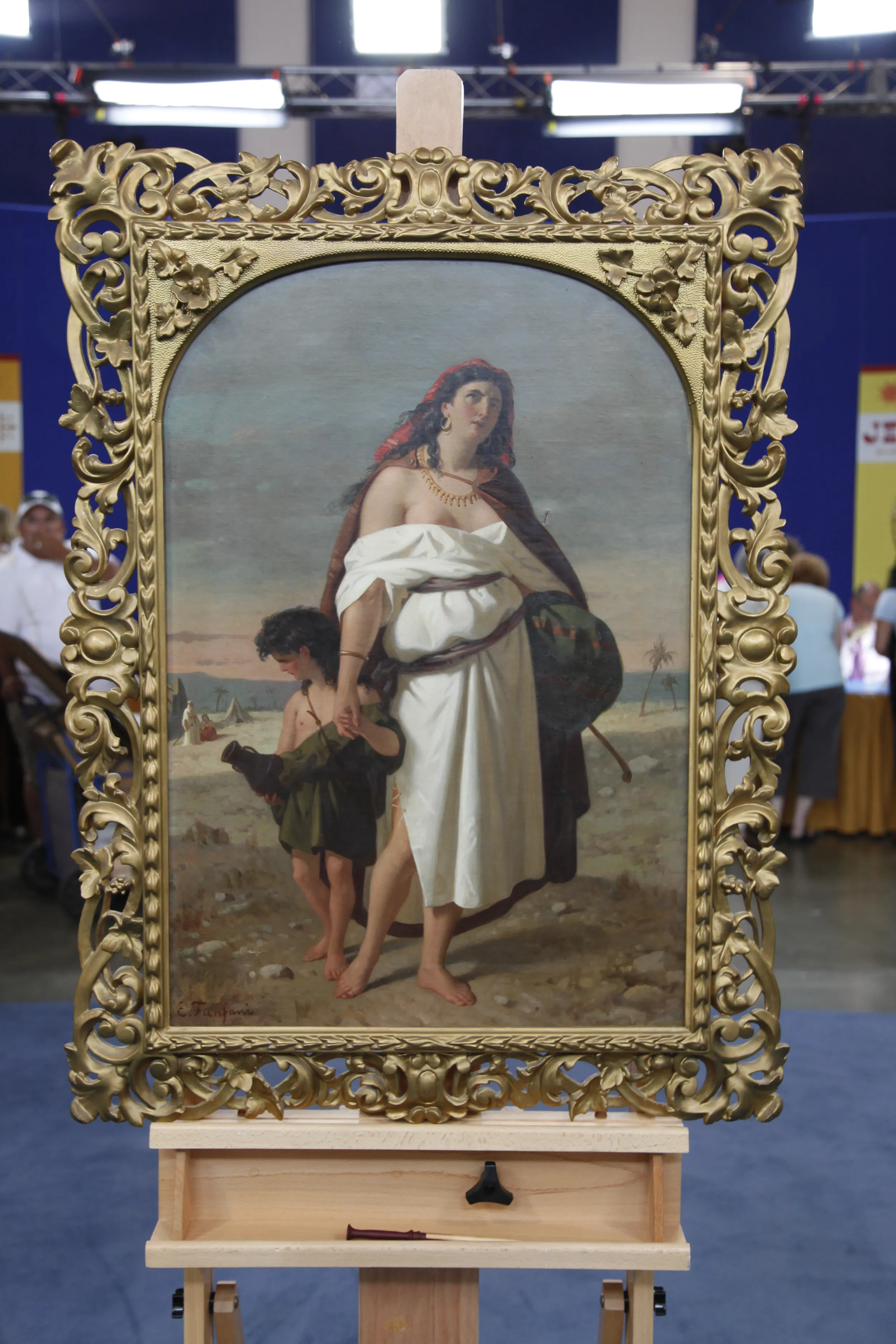GUEST: I actually moved here from Philadelphia, where I grew up, and this painting came into my family through my grandparents. My grandfather was a surgeon in Philadelphia, and one of his patients was named Fern Coppedge, and I believe that this painting was something that Fern gave my grandfather in, in gratitude for the surgery that he performed on her. Then my parents had it for some time, and then it came to me.
APPRAISER: You know, I have a theory that doctors actually have the best art collections, because so many impoverished artists end up paying their bills with paintings.
GUEST: We have another Fern Coppedge that my sister has. It's much smaller. The only thing that I know about this painting that my parents told me was that it was a scene in Conshohocken, Pennsylvania, near where I grew up. And that it was called "Goat Hill."
APPRAISER: Well, Fern Coppedge is, she was originally from Illinois, and then studied in Chicago, and then moved to Philadelphia, where she had a studio. She's best known, though, for her work done around New Hope, where she moved in 1920. And she's associated with a group of artists known as the Pennsylvania Impressionists. And of that group, she's probably the best known of the women artists. She studied with Daniel Garber, who was probably the best known of them, along with Edward Redfield. She was an en plein air painter-- she worked outside.
GUEST: Mm-hmm.
APPRAISER: And she could be seen in New Hope, in the area, in the back of her car with her easel, sitting, doing these wonderful winter landscapes. That whole market is very much in demand, and has been for some time.
GUEST: Really?
APPRAISER: She was very much someone who plowed her own furrow. She was her own woman, and I really admire her for that. Her sense of color was just extraordinary. She was basically a Fauve painter, and very adventurous in the way that she chose to work and to portray the area. Quite variable in terms of her output. And I think this is an absolute gem. It's actually 30 by 36, which is unusual for her.
GUEST: Really?
APPRAISER: She often did 18 by 18, or she did 20 by 24. The largest I've seen is 38 by 40. And sometimes she'd work as small as 12 by 12. I've never actually handled a 30-by-36 painting. I have to ask you about the frame. This doesn't quite go with the panting, in my view.
GUEST: No. I replaced the frame years ago. The frame that was on it had pieces that were glued on, and many of them had broken off, and so I didn't think it was suitable to keep a damaged frame with it, and I don't know if that affected the value in any way, but...
APPRAISER: It may well have originally had a frame by either Harer or Badura, who were the two leading frame makers in that area, and she often used those for her works. It's maybe not the frame I would've chosen, but it looks after the painting and it presents it well. The other thing I wanted to mention is the composition itself. It really does lead your eye in here, with the road, and then over this bridge, and then up the hill. I've seen her using this device before. It's very charming; it's... It's a wonderful compositional way of pulling the viewer into the painting. Now, I've handled a lot of work by this artist. And as I mentioned earlier, I think this is a particularly good example. At auction, I'd feel very comfortable with an estimate of $120,000 to $180,000.
GUEST: (gasps) How much?! What did...
APPRAISER: And actually... $120,000 to $180,000.
GUEST: Oh, my goodness. (chuckles)
APPRAISER: I could actually easily see it making over $200,000.
GUEST: You're taking my breath away!
APPRAISER: You seem surprised.
GUEST: I'm stunned, I'm totally stunned. I didn't even think about bringing this. This was a last-minute... "Oh, well, why don't we take this one, too?"
APPRAISER: You chose well.
GUEST: Oh, thank you so much.
APPRAISER: Not at all.
GUEST: Thank you so much.

